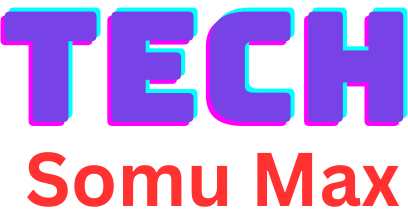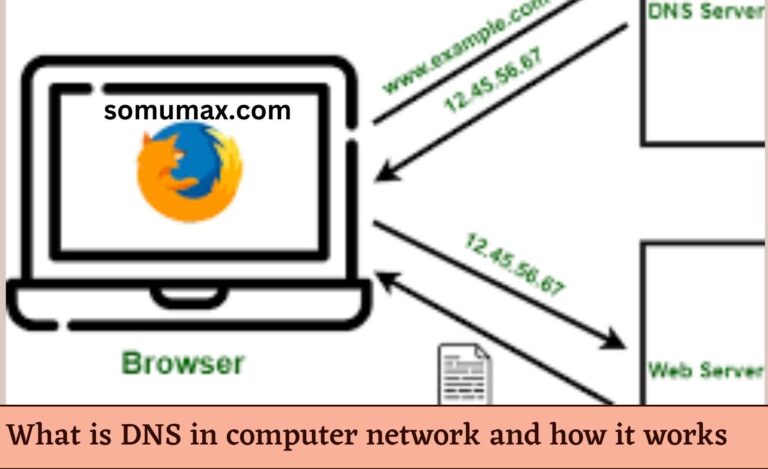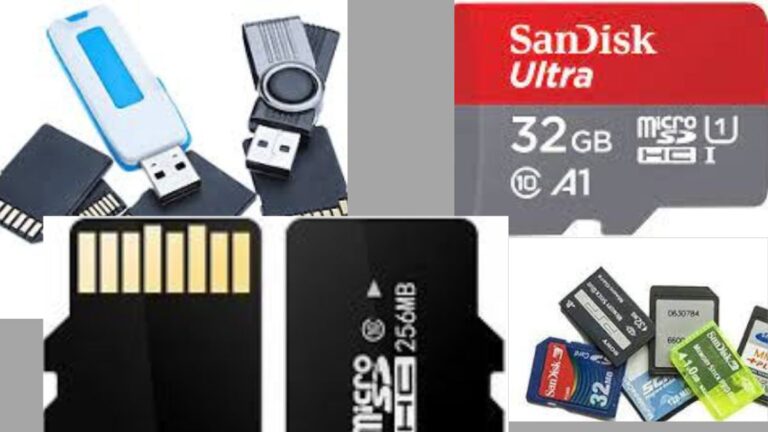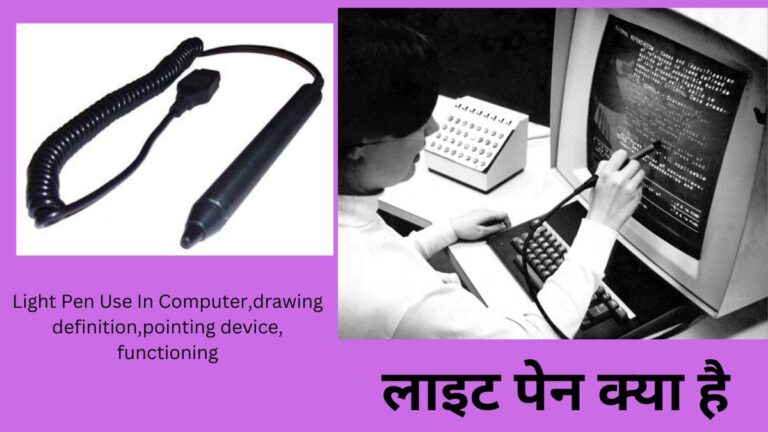What Is Computer | History,Types,uses, advantages, disadvantages
In today’s digital age, computers are an integral part of our daily lives. From smartphones to laptops and supercomputers, these devices play a pivotal role in shaping our world.

Machine have come a long way since their inception. They have evolved from massive machines that occupied entire rooms to sleek, portable devices that fit in our pockets. Understanding computers is essential in today’s digital world, as they have become ubiquitous tools for various tasks and industries.
Early Mechanical Calculators
The journey of desktop began with mechanical calculators like Charles Babbage’s Analytical Engine in the 19th century. These machines could perform arithmetic operations with precision, setting the foundation for future computing devices.
The first digital Machine was invented by Blaise Pascal in 1642 AD. It used to have a number which had to be dialled. But it could only act as a link. However, in 1671 AD a this Machine was invented which was finally ready in 1694. The credit for this invention goes to Gottfried Wilhelm von Leibniz. Leibniz invented the stepped gear mechanism for the introduction of additive numerals, which is still in use today.
Computer development
- The abacus was invented in Babylon in 3000 BC.
- In 1800 BC the Babylonians invented algorithms for number problems.
- In 500 BC, the Egyptians made bead and wire abacus.
- The use of computing trays began in Japan in 200 BC.
- The new abacus was introduced by Gerbert or Pope of Aurillic in 1000 BC.
- In 1617 AD, the Scottish inventor John Napier told about the system of division by subtraction and multiplication by addition.
- The slide rule was developed by William Outred in 1622 AD.
- In 1624, the first quadruple-function calculator-clock was invented by Wilhelm Sicard of the University of Heidelberg.
- In 1642 AD, the first digital calculating machine was made by Blaise Pascal of Paris.
- Electricity was discovered by Benjamin Franklin in 1780 AD.
- In 1876, Alexander Graham Bell invented the telephone.
- In 1886 AD, a commercial mechanical calculating machine was developed by William Baraugh which was successful.
- Hollerith Tabulating Machine Patent issued in 1889.
- In 1896, Hollerith manufactured the sorting machine through the Tabulating Machine Company (which he himself founded).
- After the merger of the Tabulating Company in 1911, the Computer Tabulating Recording Company emerged. It was formed by the merger of Computing Scale Company and International Time Recording Company.
- In 1921 AD, the Rossum Universal Robot was used by Karel Chepek. Czech word used to analyze mechanical worker using robot.
- In 1925 AD, the Differential Analyzer large scale analog calculator was made by Vannevar Bush at MIT.
- In 1927, the first public radio telephone started being used between London and New York.
- In 1931 AD, Konard Zuse of Germany made the Z-1 or the first calculator.
- In 1936, Englishman Allen M. Turning built a machine capable of computing any computable function.
- In 1937, George Stibz made the first quadratic calculator at the Bell Telephone Laboratory.
- In 1938, the Hewlett Packard Company made electrical equipment.
- In 1940, television started color broadcasting
- In 1940, Bell Labs started remote processing experiments by building the first terminal.
- In 1944, Colossus Mark-2 was built in England.
- In 1947, the Association for Computing Machinery was formed.
- In 1948, I.B.M. 604 electronic calculator released by
- In 1951, the first joint computer conference was organized.
- In 1953, the first high-speed printer was developed by Remington Rand, for the Univac.
- In 1958, Japan N.E.C. The first electronic computers NEC-1101 and 1102 were developed in
- The first removable discs were introduced in the 1960s.
- In 1958 AD, the first mini computer PDP-8 came from Digital Equipment Company.
- In 1969 AD, a 16 byte mini computer PDP by Digital Equipment Company. -11/20 prepared.
- In 1972, the 8 byte micro processor was introduced by Intel.
- In 1976 AD, Perkin Elmer and Gould SEL launched the super mini computer in the market.
- Apple-2 personal computer was brought on the establishment of Apple Computer in 1977 AD.
- In 1980, the total number of computers in the United States reached above one million.
- In 1983, the total number of computers in the United States crossed 10 million.
- In 1983, the total number of computers in the United States crossed the figure of 30 million.
- In 1992 AD, Windows operating system for work group was launched by Microsoft.
The history of computer development is often linked to different generations of computerization devices. Each generation of desktop represents a significant technological development that fundamentally changed the way desktop work. This led to the continuous development of smaller, cheaper, more powerful and more effective and reliable devices. Here is an overview of the various stages in the development of computers that led to the current devices we are using today.
Stages of computer development
(a) First generation (1940–1956): Vacuum tubes
In the first era of computers, magnetic (magnetic) and circuitry (circuitry) drums were used for memory and for this reason they were very large and took up the space of the whole room. They were very expensive to use and consumed a lot of power, generated a lot of heat, and sometimes broke down. First generation desktop relied mainly on machine language to operate, and could be read one at a time. Only he could solve the problem. Input was based on punched cards and paper tape, while output appeared only on printouts.
UNIVAC (Universal Automatic Computer) and ENIAC (Electronic Numerical Integrator and Computer) are examples of first generation Machine devices. The UNIVAC was the first commercial computer delivered to the United States Census Bureau in 1951.
Vacuum tube circuit
(b) Second generation (1956-1963): Transistor
The use of transistors started in place of vacuum tubes and with this the second generation of desktop came into existence. The transistor was discovered only in 1947, but its widespread use was only possible in the late 1950s. It was much more sophisticated than the vacuum tube that powered computers.
Smaller, faster, cheaper, better energy efficient and more reliable than first generation Machine. Although transistors also produced enough heat to damage computers, it was much better than vacuum tubes. Second generation computers also relied on punch cards for input and printouts for output.
Second generation computers used symbolic or assembly language rather than cryptic binary machine language. This made it convenient for programmers to give specific instructions in Word. High-level programming languages were also invented at this time, such as COBOL and FORTRAN. It was also the first computer to store its instructions in memory, leading to the use of magnetic core technology instead of magnetic drums. The first computers of this generation were developed for the nuclear power industry.
Transistor based circuit
Third generation (1964–1971): Integrated circuit
The biggest feature of third generation computers was the use of integrated circuits. The transistor was miniaturized and mounted on a silicon chip, which was called a semiconductor. This dramatically increased the capacity and speed of desktop.
Instead of punch cards and printouts, users were introduced to monitors and keyboards in third generation desktop. Along with this, he also got acquainted with an operating system. This allowed many different applications to be created at the same time with a central program. For the first time, desktop could reach a large audience because they were smaller and cheaper than before.
Integrated circuit
Fourth generation (1971 to present): Microprocessor
The fourth generation of computers came into existence with the microprocessor, in which thousands of integrated circuits were built into a single silicon chip. Where the first generation desktop used to take up entire rooms, now desktop could fit in the palm of your hand. The Intel 4004 chip, invented in 1971, had all the necessary components of a computer—from the central processing unit and memory to input/output controls—on a single chip.
In 1981, IBM brought its first computer. It was for home users. In 1984, Apple created the Macintosh. Microprocessors have moved beyond desktop into many areas of life and are used in day-to-day products.
These little desktop are very powerful. They can link together networks today that would eventually lead to the development of the Internet. Fourth generation computers also saw the development of the mouse, GUI, and hand-held devices.
Fifth generation (current and beyond): artificial intelligence
Fifth-generation desktop tools based on artificial intelligence are still under development, although some tools such as voice recognition are in use today. Superconductors and parallel processing are helping turn artificial intelligence into a reality. Quantum computation and molecular and nanotechnology will completely change the face of desktop in the coming years. Fifth generation computers aim to develop devices that can operate from natural language input and are capable of self-organization and learning.
Type of computer
Personal Desktop (PC)
Mainframes: Computers running with large hard drives, lots of memory capacity (RAM), multiple CPUs perform different types of computation depending on the speed of the processor and the use of memory.
Super Computer: This Machine is equipped with a lot of processors, ALU, memory (RAM), etc. It is generally used in scientific research. It has a capacity of 14,000 microcomputers.
Laptop: It is a compact computer that performs the same functions as a personal Machine but can be carried in the hand. It is the size of a notebook.
Micro Computer: It is a very small Machine, which is used in the camera. That has a microprocessor as its central processing unit. Another feature is that it occupies much less space than micro frame and mini desktop.
Personal Digital Assistant or Palmtop (PDA)
It is a handheld Machine, although it has been changing continuously over the years. PDA is also known palmtop. It has many uses – calculations, use as a clock and calendar, access to the Internet, sending and receiving e-mail, video recording, typewriting and word processing, use as an address book, creating and writing on spreadsheets, bar Scanning of codes, use as a radio or stereo, games, recording of survey responses, and Global Positioning System (GPS), etc.
The new palmtops also come with color screens and audio capabilities, can be used as mobile phones (smart phones), web browsers or portable media players. Many PDAs can also access the Internet, an intranet or extranet using Wi-Fi, or even a wireless wide-area network. Many palmtops also use touch screen technology.
Analog: Old, unusable computers. These measure physical quantities, such as ammeters, voltage meters, etc. An analog Machine is a device that performs computations using continuous physical changes that are analogs of real objects. Analog computers may for example use continuous rotation of gears or perform computations with the help of angular movement of mechanical or electro-mechanical parts.
Digital: These use binary digits for processing, like personal Desktop.
The Machine that store data in terms of digits and perform processing from one step to another in discrete steps. The state of a digital Machine is typically determined using binary digits, which may also take the form of the presence or absence of magnetic markers on a storage medium, on-off switches, or relays. In a digital computer, letters, numbers and even the entire article is displayed in a digital way. Unlike analog computers, this digital computer can increase the frequency by serving a large number of digits to represent any state, randomly in small steps.
Hybrid: These Machine combine the best features of digital and analog computers. These are Machine that have characteristics of both digital and analog . Its digital part usually acts as a controller and provides logical operations (digital operations), while its analog part usually performs differential calculations.
FAQs :-
Conclusion
In conclusion, computers have transformed our world, becoming an indispensable part of our lives. They continue to evolve, shaping our future. From their humble beginnings to their vast applications, computers are a testament to human ingenuity and innovation.





